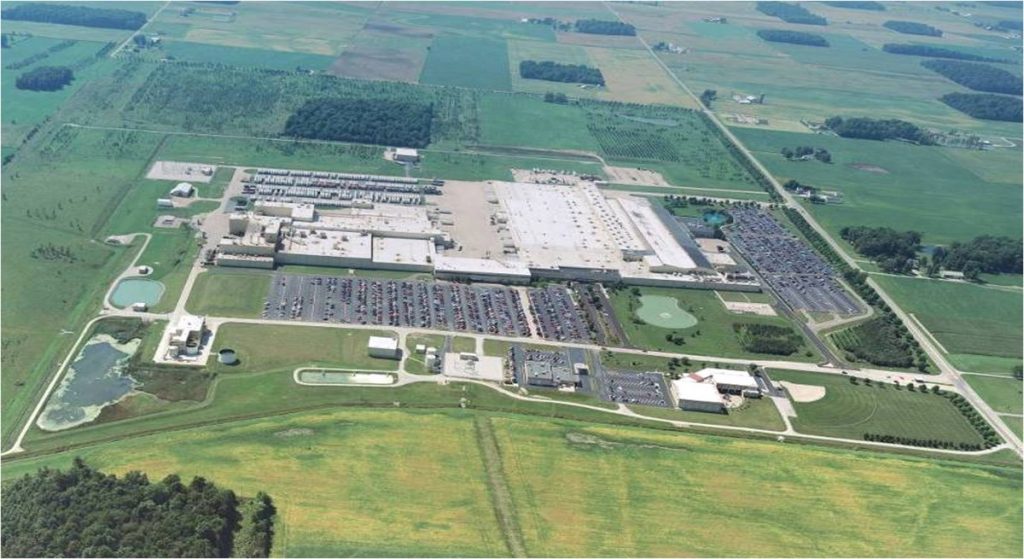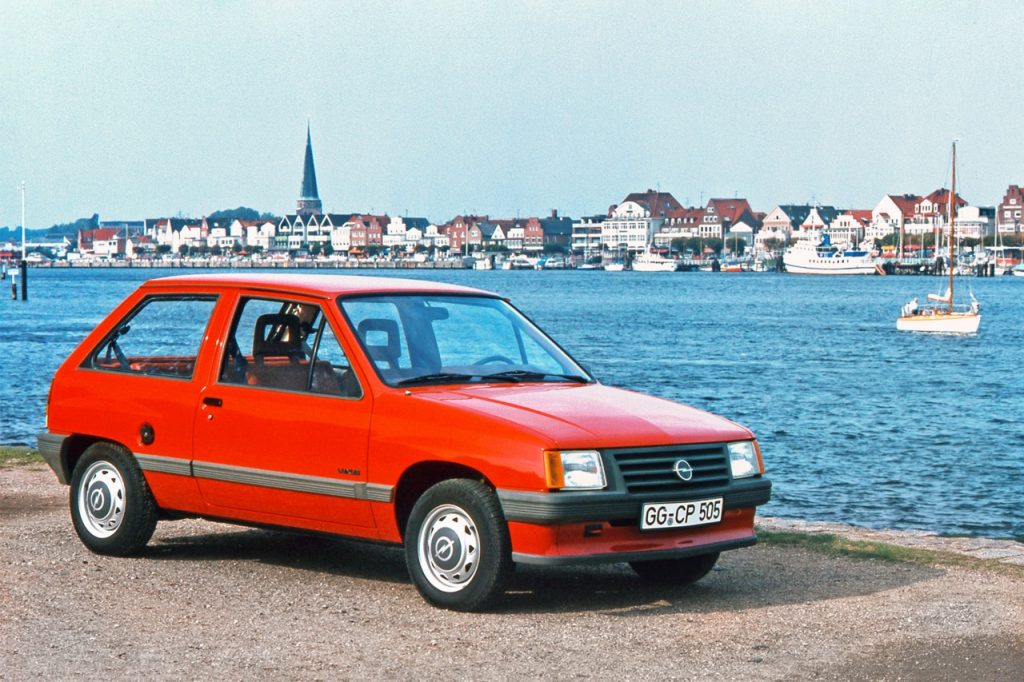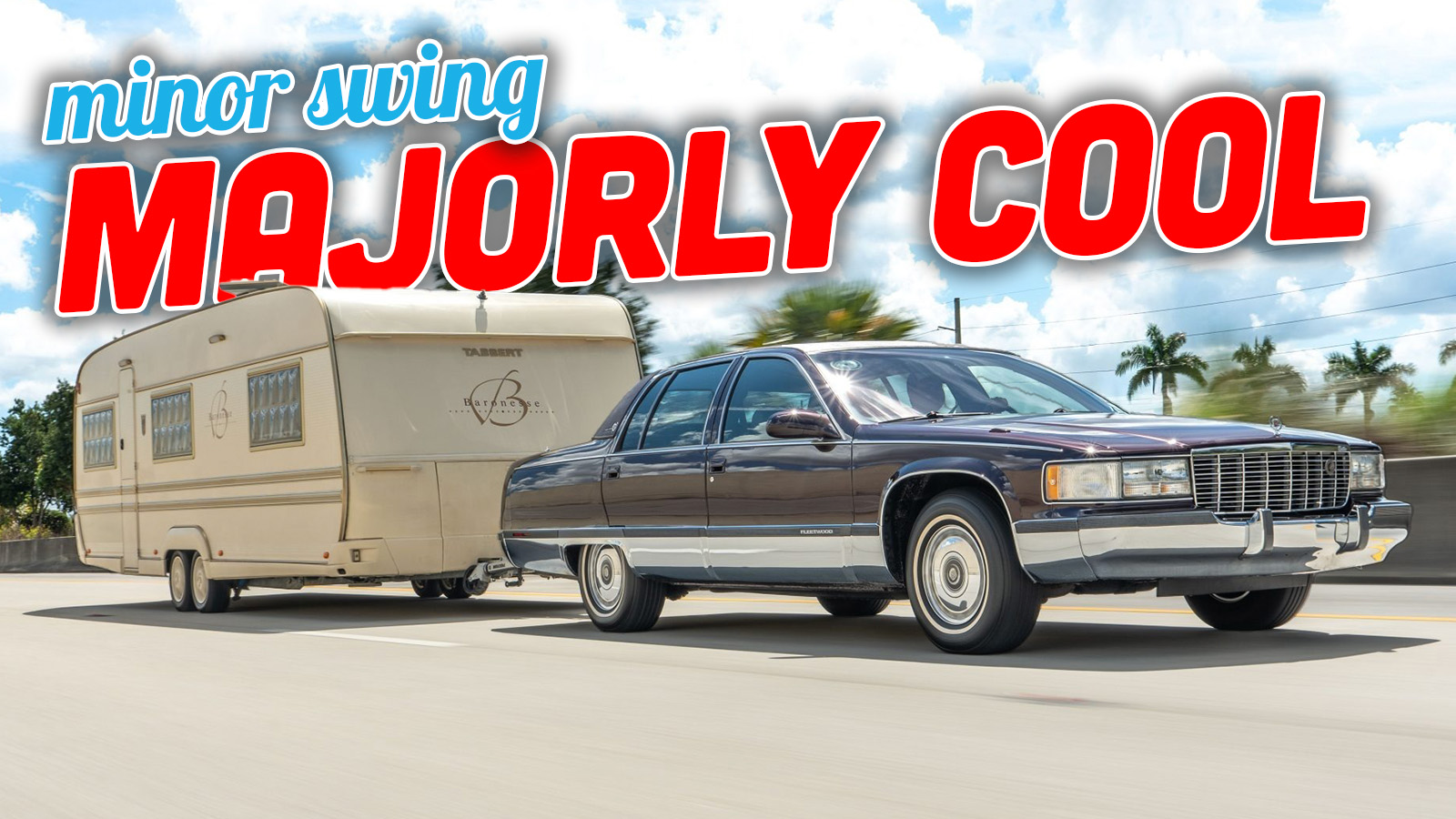Honda has a well-earned reputation for quality that’s backed up by numerous high-mileage vehicles sitting on Craigslist and Marketplace, but no one bats 1.000 for long. When it comes to the popular V6 that Honda used in nearly every large vehicle over the last year, it might be batting closer to 0.000.
I don’t tend to do a lot of recall news in The Morning Dump, as recalls are just a normal part of doing business, and this roundup is all about spotting unique or important trends at a larger level (and Škoda news I can’t publish anywhere else). This Honda one sticks out to me because Honda has already had a recall for this same engine over the risk of catastrophic failure, in addition to another ongoing investigation over its stop-start system.
And while I’m on the topic of catastrophic failure, is Opel the first Stellantis brand that’s going to get cut? There’s some indication it might be, which would be another sad legacy for Carlos Tavares. BYD’s legacy is probably more secure, but the company seems unhappy with its current image in China.
And, finally, Autopian friend and contributor Parker Kligerman wins Daytona for a second time this year… and won’t get credit… for a second time this year.
The Honda 3.5L V6 May Be Failing For An Entirely New Reason

If you were thinking to yourself: Didn’t Honda already recall and have to replace a bunch of its 3.5-liter V6 motors? Yes. That is a thing that happened quite recently. Since as early as 2020, Honda has been getting complaints from owners that the V6 engines used in the Acura TLX, Acura MDX, and Honda Pilot were susceptible to failure.
Back in 2023, the National Highway Safety Traffic Administration (NHTSA) Office of Defect Investigations (ODI) looked into the issue, with Honda eventually issuing a recall for about 250,000 of these motors over the risk of the connecting rod bearing seizing and basically grenading the entire motor. Here’s what NHTSA describes as the cause:
“During production of the crankshaft, due to improper settings of equipment used to manufacture the engine crankshaft, the crank pin was improperly ground, resulting in crank pins with a crown or convex shape that are out of specification.”
Honda was able to determine which of the two motor plants in the United States was responsible for the error, which limited the number of cars that had to be recalled.
That, unfortunately, is not the end of the story. The ODI just reopened the investigation, and it includes the following vehicles:
- 2018-2020 Acura TLX
- 2016-2020 Acura MDX
- 2016-2020 Honda Pilot
- 2018-2020 Honda Odyssey
- 2017-2019 Honda Ridgeline
These are popular vans/trucks/SUVs, which is why the investigation includes a total population of more than 1.4 million vehicles.
According to the ODI, there have been over 3,000 reports of failure, including seven that resulted in a fire or crash. So far, there have been no reports of injuries or fatalities connected to this issue.
People are often slow to respond to recalls, so is this just an issue of people not getting their car fixed? Nope. From NHTSA:
The Office of Defects Investigation (ODI) has received 414 reports of connecting rod bearing failures in the 3.5L V6 engine used in the following vehicles: Model Years (MY) 2018-2020 Acura TLX, MY2016-2020 Acura MDX, MY2016-2020 Honda Pilot, MY2018-2020 Honda Odyssey, and MY2017-2019 Honda Ridgeline. The subject engine failures were analyzed as part of a Recall Query (RQ24013). It was determined that these engine failures are outside the scope of Honda Recall 23V-751. Further, evidence gathered in conjunction with RQ24013 does not suggest this failure is caused by the same crankshaft manufacturing defect that is addressed by Honda in Recall 23V-751. Based on analysis of data from RQ24013, NHTSA has closed that investigation. The significant number of reports of engine failure in vehicles outside the scope of RQ24013 presents a potential safety risk that warrants further investigation.
ODI is opening this Preliminary Evaluation (PE) to further evaluate the scope and severity of the potential problem and to fully assess the potential safety-related issues. To review the ODI reports cited in the Opening Resume ODI Report Identification Number document, go to NHTSA.gov.
Honda Recall 23V-751 is the first one mentioned, and NHTSA here is saying specifically that this is not related to that failure. Worse, NHTSA is saying that the underlying issue isn’t caused by the same manufacturing defect. I’ve reached out to Honda for more information because this seems quite troubling.
While not every inquiry like this ends up in a full investigation or even a recall, the total number of incidents suggests that this might not be a fluke. It’s possible that there was a secondary manufacturing defect that wasn’t detected, an underlying design issue, or some failure on the part of a supplier that didn’t become immediately apparent. Additionally, many (or possibly all) of these same motors are under a separate investigation due to a stop/start issue.
If it does go to a recall, Honda might have to replace engines like it did with the previous generation car. I’ll be curious to see if it’s all isolated to a single plant or not.
Update: Honda issued a statement acknowledging the PE:
Honda is committed to safety. We are aware that NHTSA has closed an existing Recall Query (RQ24013) and opened a Preliminary Evaluation (PE25008), which addresses complaints that a failure of connecting rod bearings could lead to engine failure in certain 2016-2020 Acura MDX, 2018-2020 Acura TLX, 2016-2020 Honda Pilot, 2017-2019 Honda Ridgeline and 2018-2020 Honda Odyssey vehicles.
Honda has already been in communication with the agency on this topic and will continue to cooperate with NHTSA as the investigation continues.
Opel Is In Trouble

On Friday, I talked about how Alfa seemed like a doomed brand in the United States, but Alfa is at least a sales success in Europe and, especially, in Italy. The Stellantis brands typically do well in their home markets, which is why so many of them still exist.
Opel, though, is not one of those brands. The formerly GM-owned, German-headquartered brand was taken over about a decade ago by Group PSA and its CEO Carlos Tavares (not pictured), who eventually helped roll it into what became Stellantis. The brand had a brief turnaround under Tavares, but like a lot of Tavares-run brands, this was short-lived.
The company has been in trouble lately, with dwindling sales and a lot of pointed fingers. Through the first half of 2025, sales at the brand were down 16.1% YOY (if you include Vauxhall, the British counterpart). Current CEO Florian Huettl is trying to save the company, but, according to this super mean quote from an anonymous Stellantis source in Manager Magazin, it’s going to be a tough go:
Today, Huettl himself plays the regional leading role he claimed rather mediocrely. Peugeot is number two in France, in close competition with Renault. Fiat is still number one in Italy. Peugeot is number two in France, in close competition with Renault. Fiat is still number one in Italy. And Opel? It was only number seven in Germany in the first half of the year.
“Opel is the fifth wheel on the wagon,” says someone from the French Stellantis corner. “Other brands in the group are local champions,” says consultant Kipferler, “but Opel is not.”
Florian Huettl is considered internally to be someone who more or less obediently takes a back seat in the Stellantis hierarchy. “You can get along with him,” says an employee representative. But nothing more.
What I have learned lately is that you don’t want to be the subject of an anonymous quote from a Stellantis employee in Manager Magazin unless you’ve got a back made of steel.
BYD Wants To Shed ‘Be Your Driver’ Image With New Track
BYD is a backronym for “Build Your Dreams,” but lately it seems like the dream you’d have to be living is that of a taxi or rideshare driver, as that’s the main user. It’s led to this funny alternative pointed out in this Bloomberg article:
BYD cars have become a common sight on China’s roads and a favorite among city taxi and ride-hailing drivers. It’s given rise to a popular joke: While BYD officially stands for Build Your Dreams, many quip it’s short for Be Your Driver.
Now, BYD is trying to rewrite that narrative, launching luxury models priced over $200,000. Its latest effort to shed its utilitarian skin has involved building an entire automotive racing and testing playground to bring potential customers from the street to the track.
As you can see in the video above, the new on/off-road racing circuit in Zhengzhou is like an even bigger and more Disney-like version of Porsche’s Experience Centers. We should send a racecar driver to go check it out. I think I know one.
Autopian Contributor Wins, But Doesn’t Win, Daytona For Second Time This Year
If you know anything about race car driver/commenter/car host/journalist/Connecticut booster/Long Island rock fan/superfriend Parker Kligerman, it’s that his talent and his luck sometimes seem to be driving in opposite directions. Proof?
At last year’s NASCAR Xfinity Series ROVAL race, he was robbed of a victory by a poorly-timed caution light. Earlier this year, he clearly won the opening Daytona NASCAR truck race, only to have the win taken away by a bogus (in my eyes) tech inspection. That truck race should be counted as a victory, but he’s in last place instead in the record books.
At the Watkins Glen Xfinity race a few weeks ago, breakout NASCAR star Connor Zillisch was climbing out of his winning car when he slipped and hit the ground headfirst. That was enough to break the driver’s collarbone. While Zillisch was technically cleared to start the Daytona race this weekend, everyone thought it would be better not to risk the driver (who already has secured a place in the playoffs) getting wrecked in one of Daytona’s big accidents.
Parker is now in the booth for Xfinity races, but Dale Earnhardt, Jr. (who runs JR Motorsports) himself asked him if he could fill in as a backup driver for Zillisch for the race. Everyone agreed that it would be a great idea, so Parker suited up that evening. After a rain delay, the race got started, and Zillisch immediately dropped to the back to avoid getting hit. During the first caution, the JR Motorsports crew pulled off an incredible driver change (not common in NASCAR) so Parker could start the race on the lead lap. This is a real thing allowed in NASCAR, not just in Talladega Nights.
It was a great race by Parker, and he managed to play the field perfectly, putting himself into position to win the race. Of course, because he didn’t start the race, Zillisch gets credit for the win.
This time, though, it’s clear who gets the credit for the victory, and everyone seems happy. Congrats to Parker!
What I’m Listening To While Writing TMD
It’s been a while, so let’s have “What’s Golden” from Jurassic 5. The opening sample is going to forever be lodged in my brain.
The Big Question
What’s the most cursed engine of all time?
Top Photo: Honda








Right now, the 2022+ Tundra engine failures seem to be a curse. First, Toyota blamed a single employee for failures, then shifted to manufacturing issues due to debris in the engine block at manufacturing. They initiated a recall isolated to an arbitrary time period, SOP to mid-February 2023, even though they made no changes in Feb 2023 that would justify a cutoff date. They didn’t include Hybrid owners in the recall, so the people who bought the most expensive trucks have been excluded. They created a clean point, declared success, but the failures still occur on trucks off the lot today. Either they were wrong about the root cause, or haven’t developed proper controls on the debris removal/inspection. Whatever the origin, the curse can strike at 1,000 miles, or at 120,000+ miles, from the stories I’ve read. This engine is a complex engineering marvel, which is to say, all of the components are ridiculously expensive to replace, and repairs are $29000+ if you are not in warranty.
Wasn’t there some 8.1l V8 Malaise-era Cadillac engine making 125hp or something equally ludicrous? That’d at least be in contention, right?
I guess the big question is how we define an engine’s “badness”. A low-power engine is not the same as an engine prone to failure, and I’m sure the latter type is well-represented in these comments.
“BYD cars have become a common sight on China’s roads and a favorite among city taxi and ride-hailing drivers.”
They shouldn’t shed that image. They should emphasize it as PART of what they do… sort of like how the non-S-class Mercedes diesel used to be the go-to vehicle for Taxicab owners/drivers in many places in the world… until the 2000s and beyond when Mercedes cheapened up everything under the skin and went for flashiness instead.
In my view, the solution for their image is to have at least one all-out sports car and at least one roadster/convertible.
And getting into racing is a good idea as well.
“What’s the most cursed engine of all time?”
That’s hard to pick… so many choices… such as:
-The Chevy Vega aluminum 2.3
-The Crosley COBRA sheetmetal engine
-The Nissan KR variable compression engine
-The Rotary engine… all of them.
-The Ford 6.0/6.4L powerstroke V8
-VW V10 TDI
-GM 6.2L L87 V8
-Ford 1.0 3cyl ecoboost.
-BMW N63
-BMW/Mini/Peugeot N13/N14/Prince engine
-BMW S85 V10
-GM/Daewoo LUV/LUJ 1.4L turbo 4cyl
-The FCA/Stellantis 3L Ecodiesel
-Oldsmobile 5.7L diesel
-Ford 5.4L 3V V8
-Mercedes M272
And I’m sure there are many other crummy engines from more marginal companies in the past that are now long gone.
So it’s hard to just pick one.
Oh man growing up in Hong Kong we used to call BYD Buy Your Death! Then as they pivoted to EVs, people in China called them Buy Your Daddy, as in early EVs were so finicky and limited in capability it was like taking care of an elderly family member (literally 电动爹 in Chinese, Electric Dad). Can’t believe they’ve reached Bring Your Dollars status now.
For bad from the factory, it’s hard to top the initial Honda 500 Interceptor. The bearings on the first 1800 were bad, and every single press bike spun their bearings. Honda replaced the motors, very few got to customers. Dealers got 36 minutes to replace the motor, including 12 of set up time, when they complained, Honda sent them a video of a mechanic with an array of T handle wrenches, who indeed did do the change in 24 minutes. But, this probably doesn’t count, as it was an immediately fixed manufacturing defect.
I’m glad you mentioned Parker’s Xfinity win at Daytona. It’s been a long time since I rooted for someone that much. My favorite worst engine is the Vega with warp drive.
What’s the most cursed engine of all time?
Probably the 3.0 Liter Triumph V8 that was in the Stag when launched.
This is why it cracks me up when the purists continue to insist that Honda and Toyota are more reliable than any other brand without exception. It’s not the 1980’s/1990’s anymore. Other brands have made up ground, and Honda/Toyota have backslid in a lot of ways. The main thing that kept them so reliable was perfecting a simple design and minimally changing it for a long period of time.
As that’s changed and they’ve released increasingly technologically complex powertrains, they’ve had the same types of teething issues that every other OEM’s been in the news for. Sure, on average they are more reliable than other manufacturers. But it’s not like every vehicle will be a slam dunk free of worry, and sometimes it may be prudent to look elsewhere, considering the premiums that these brands often command.
…but, but, but if you listen to what automotive journalists say and read comments online, Honda has a bullet-proof reputation for reliability.
The Honda 1.5 turbo scares me a bit too, and it’s used in pretty much almost every Honda that doesn’t have the V6 or the older 2 liter naturally aspirated motor (which is the one I’d want, even though it’s less powerful and older tech). It’s got those very well documented oil consumption issues, and some of the Civics it’s in (and other models too I assume) have a variety of known problems, including paint peeling off the side view mirrors and door handles.
It’s not just the oil consumption, but also head gasket issues. Family member of mine had it fail on their car out of warranty and the only option at that point is to get a new car or get a new engine. Both of which are not cheap since no one sells a crate motor 1.5T. https://www.carscoops.com/2025/07/drivers-say-hondas-turbo-engines-are-failing-early-and-the-company-knew/
Yeah, but there’s only one cylinder head, so it’s only half as bad as a Subaru.
Anything from Harbour Freight. /s
Honda: I have only owned one Honda car in my life, and it was the only one to strand me twice, which is amazing, as I’ve owned a lot of sketchy cars. I bought the 1978 Honda Accord LX brand new, and it ate the motor twice due to the pollution control system contaminating the oil system. To their credit, Honda replaced the engines twice, once out of warranty, for free. After that, I sold the Accord and have never owned another Honda car. (I’ve owned several Honda motorcycles, though.)
Stellantis/Opel: I’ve driven a lot of Opels as rental cars in Europe, and they’ve been ok, if uninspired. I’ve also had rental Buick Regals and Saturn Astras in the US.
Cursed engine: Old favorites in this category, but the Olds diesel, or the V8-6-4 Caddy engine. Honorable mention goes to the GM Wankel engine that AMC was going to buy for the Pacer, but then had to retool for a heavier engine after GM couldn’t make it work.
I counter with Hypnotize.
The Ram EcoDiesel has to be right up there. In the 9 years I owned mine, it had the following issues:
I’m probably forgetting some, but I think those were the big ones. It was bad enough that one of the last times I had it in the shop, the service advisor looked at my history and said, unprompted, “You’ve been in here a lot.” Yeah.
Since my girlfriend drives a 2019 Pilot, I guess my 1998 BMW e36 is now officially the more reliable of the two.
/s
Damn, Honda, I know you’re outsourcing your electric vehicles to GM, but you didn’t have to outsource quality control to them, also
I’m pleasantly surprised (but still slightly worried) that my ’17 Accord V6 is not part of the recall.
I guess those engines were made on different equipment?
Watch your torque convertor- those are defective in 2017 models! Mine was just replaced.
What are the symptoms? I just turned over 67K miles on mine. Did they have a factory program to make you whole?
Youll get a DO3 code on the dash where it normally displays the gear position. Mine kicked it at 120k. Honda extended the warranty for the part to 150k/8 years from initial sale date.
The DRL headlights have a 10 year warranty due to a defect there as well.
Thanks for the info. I’ve seen a few dead DRLs, but had not heard about the TC. I’m a few months past the 8-year warranty. 🙁
Hopefully, it won’t be an issue before I end up driving something else.
Hear me out, but most cursed is the Rotary. Greatest engine in many ways, but also the worst in many more ways. I nominate the NSU Ro80 engine specifically. I still want to own a rotary powered Rx7 someday….
Weird is Good!
71-73 Mazda 12A rotaries : they pretty much all failed and got replaced before they had 40k miles on them. At this point Mazda was into rotaries in a big way and this engine was put into coupe, sedan and wagon versions of Rx-2, Rx-3 and Rx-4.
I’d have to agree, even as someone that owns and loves his rotary powered car. Mine has been good but is lowish miles, but my friends dad once had a 12A powered RX7 with 400k on the original engine before the chassis rusted.
How the mighty have fallen.
I nominate the GM for most most-cursed engines status:
Northstar
Vega I4
Iron Duke Tech4
Olds Diesel
Cadillac V8-6-4
HT-4100
3.6L VVT (LFX)
L82/84/87 (if I have my nomenclature correct)
AM General Detroit Diesel
No wonder GM are making the push to EVs – They can’t seem to build a reliable engine out the gate to save their lives.
I cant really disagree with the list. GM rides on the gen 1 small block v8, and the non-fancy gen3/gen4 v8s (think LS1, 5.3s, Ls3). I say non-fancy, as once the variable displacement gets involved it often gets messy.
Sometimes, GM pulls an Icarus and flies too close to the sun, like the LS7 (7.0L) in the c6 z06. It was great in theory (basically a bigger stroke ls2 with high flowing heads), but has proven that such low valve angles and need for high rpm was not possible with their production methods and now its a common thing to replace the heads on these for fear of complete destruction.